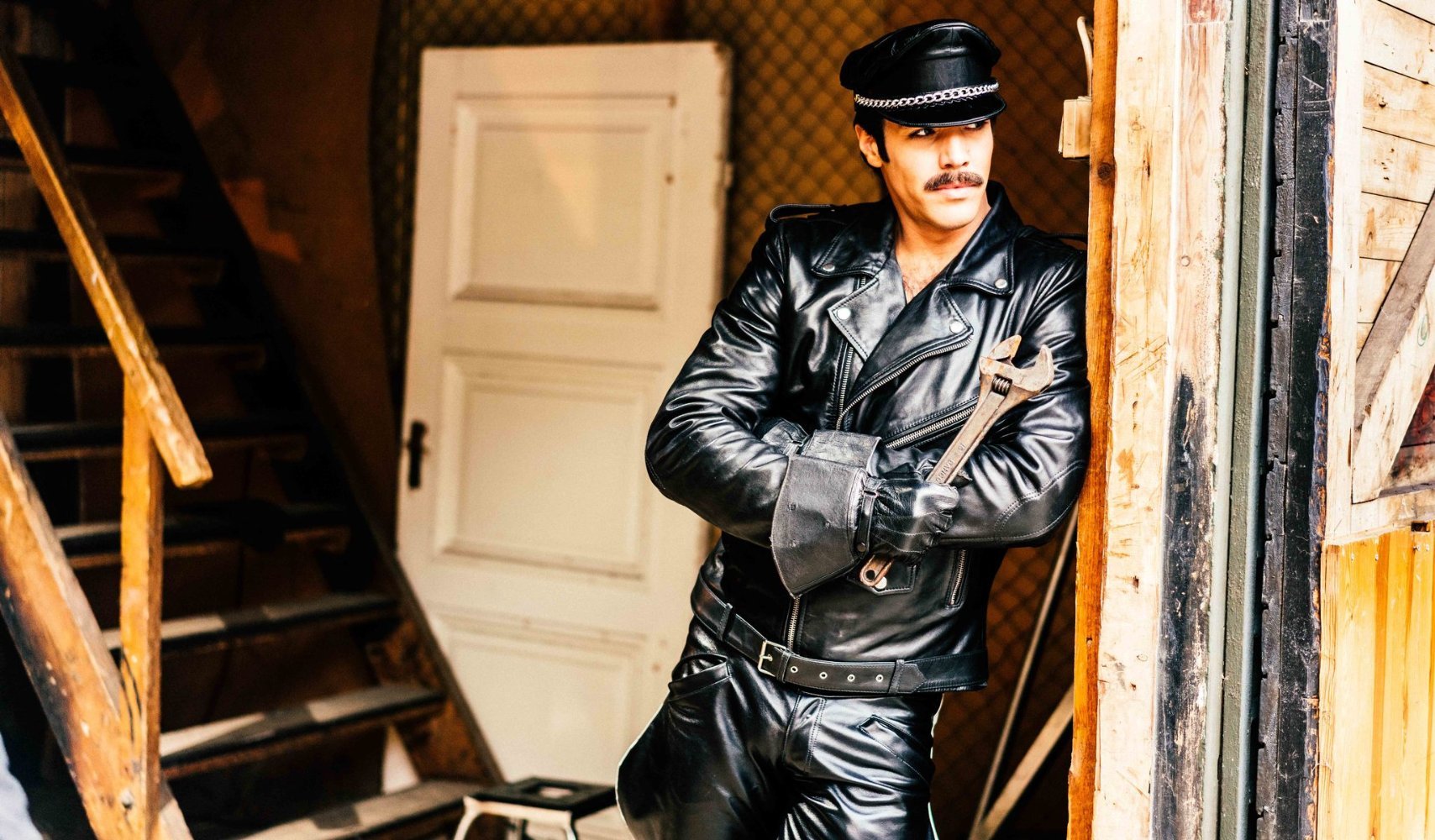Tom of Finland was a proud fantasist: a repressed gay man living in conservative 20th century Scandinavia, he used his artistic flare to create homoerotic, fetishised illustrations of the bodies he yearned to touch but couldn’t. He was a master of the carnal portrait: taking uniformed men and labourers, partially undressing them, then exaggerating their godliest assets in a hyper-sexual style.
But ‘Tom’ wasn’t always the erotic artist he has been immortalised as. For decades he was Touko Laaksonen: a successful young ad agency employee who, when World War II arrived, kept his sordid drawings under wraps, purely for his own pleasure.
Few artists create works as memorable, valuable, and as challenging as he did; even fewer do so in a society that would seem hellbent on silencing them. As a result, Tom’s work has become a glorious symbol of queer liberation, while the story of his life (which is arguably just as fascinating) has been brushed over.
A powerful new biopic from director Dome Karukoski is about to change that. Taking us through the five chapters of Tom of Finland’s life that would come to define him, we witness his time as a WWII soldier, his lengthy relationship with his partner Veli, and the moment he broke into the American gay art scene.
To find out more about how his life story was eternalised, i-D met Dome at the biopic’s UK premiere in Edinburgh to discuss Tom’s free-spirited work and how it could change the life of a Chechen teen.
What was it that made you want to turn Tom of Finland’s story into a film?
I had been a fan of his work all through art school, and so [I understood] his level of artistry, but what struck me most was that his life was so cinematic. You could remove his drawings, and it would still be an amazing story.
[Also], if you think about what he endured as an artist, this is a story is about freedom of speech, freedom of being and oppression – it’s still relevant in 2017. It felt like an important story to tell.
His work is still loved today, but Tom himself died in 1991. Did you get to speak to anyone who had met him?
That was such a big part of our research: to meet people who knew him or worked with him. We also worked with the Tom of Finland Foundation and got access to their archives, his letters, his photographs and diaries. That was so valuable in [helping us] understand who he was.
We didn’t get much information about [his lover] Veli, though. When he died, he had two obituaries and neither of them mentioned Tom – they were together for over 20 years, and so we [couldn’t talk to] his family. We knew Tom’s friends who also knew Veli, so we had to source information [on his life] that way.

I guess his life, unlike his work, was rarely discussed. Was there anything you discovered about it that took you by surprise?
The cliche of a film about a gay person is that they’re afraid or shameful about their sexuality; Tom wasn’t like that. That was a revelation [for me]. I realised we had a character who early on knew his desires and fantasies, and went for it. You can see that from his letters and everything that’s written in interviews – even in pictures!
There’s one photograph from the war. It has 10 guys lined up, a lot of them look shy, [but] Tom is there with a cigarette in his mouth almost flirting with the photographer. That says so much about his character. I was taken by how courageous and proud he was.
He was almost like James Bond: a proud, but very tragic character, [and so] he’s amazing to watch. I think that it’s valuable for a gay audience, [particularly] a young gay boy, to see a man who just doesn’t give a fuck.
He had such a rich and fascinating life. Was there any part of it that you really wanted to include in the film, but couldn’t?
We didn’t have the money to shoot one scene that I really would have loved to. It’s when [Touko] first arrives at the airport in America and there was a limousine waiting [for him]. He got into the limousine and there was leather gear waiting with a gin and tonic. So he arrives as Touko and becomes Tom of Finland inside the limo – like Clark Kent becoming Superman!
At the time, it was revolutionary for Tom’s sexualised work to become a symbol of a social movement. Do you think his work symbolises anything different now?
It still [represents] the same thing, it’s just that the situation changes depending on the country [it’s being seen in]. Now, a Chechen boy seeing his work might have an explosive feeling discovering [Tom’s drawings]. It affects boys in small town America unfortunately, too.
What’s interesting is that it’s now cool to wear clothing with Tom of Finland’s work on it. In more liberal countries, it’s not so much about the freedom that the illustrations symbolise but about his amazing artistry. I see a lot of women wearing Tom of Finland t-shirts. They’re beautiful drawings, and it looks good!

What do you think his work would have looked like if he was still alive today?
I always wonder. I think instead of American policemen, it would be Chechen or Russian policemen — it’s about the politics.
What are your thoughts about studios making films with gay protagonists in 2017. Is there an appreciation and understanding of LGBT culture now, or do they still fear it?
Their attitudes are changing all the time, but I don’t think we’re going to see a $100 million film with a gay protagonist. Tom of Finland isn’t going to make us rich. There are two sides in Hollywood: one that wants to make money and another that is looking for smart movies [but] that have spreadsheets to tick. That’s how it has always been. In my opinion, [the latter] are looking to be creative and touch on interesting subjects.
We’re living in a time in which we’ll always have superhero movies, but at the same time there’s an urgent need for quality. I wouldn’t be surprised if one of those studios made a $50 million gay film in future; they’re very open.
What do you hope that people take away from your depiction of Tom of Finland’s life?
I hope that when they leave the theatre that they go to a disco, have the fucking time of their lives, and dance their asses off without shame! That’s what Tom of Finland would have wanted: to have fun, dance, drink and fuck!
Tom of Finland is released in UK cinemas on 11 August
Credits
Text Douglas Greenwood
